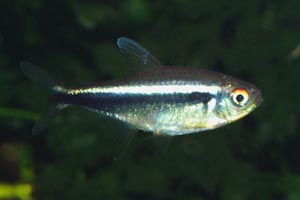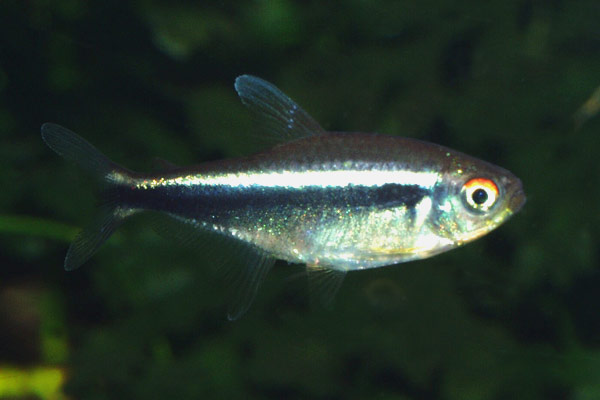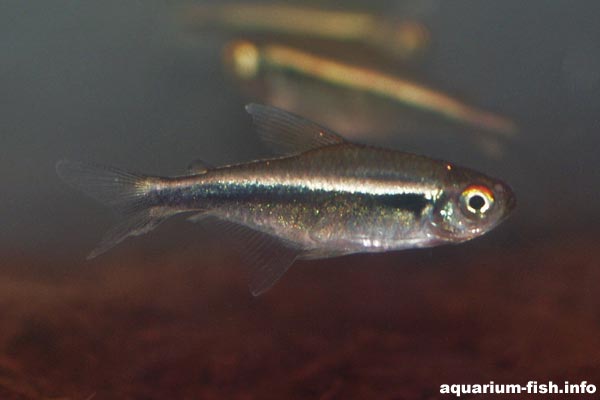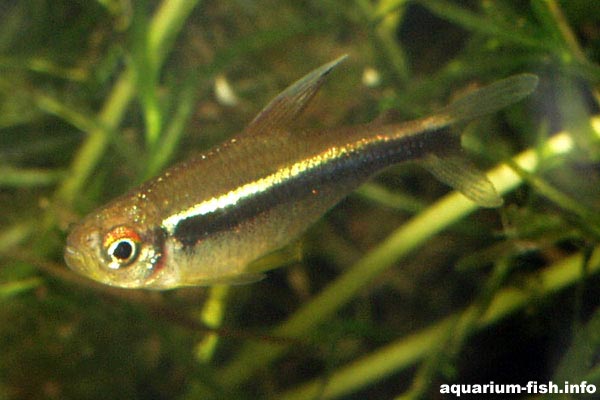

Species Profile | Images | Breeding Report | Similar Species

(Other members of the genus Hyphessobrycon)
ADULT SIZE: 4 cm
WATER CONDITIONS: Moderately soft and acidic
TEMPERATURE RANGE: 23-27 C
FOOD: Feed Hyphessobrycon herbertaxelrodi live and dried foods. This species tends to inhabit the upper stratas of the tank, and although quite happy eating all manor of dried and frozen foods, certainly relishes free-swimming live foods (Daphnia, Artemia, Mosquito larvae) and, when available surface foods like fruit flies.
DISTRIBUTION: This species comes from Brazil
AQUARIUM CARE: A lively shoaling species, peaceful, and a good community fish. Although it's common name is the Black Neon Tetra, it is actually unrelated to the Neon Tetra, Paracheirodon innesi. However, like the aforementioned, it does hail from similar environments in South America, most notably the Paraguay River drainage areas of Brazil. As such it prefers to live in a dark-bottomed tank, well planted, with soft water; although it will tolerate harder water.
Like all tetras it should be kept in a shoal of at least 6-8 individuals.
BREEDING: A typical egg scattering species. A special breeding tank with a substrate of marbles, as described here is ideal for breeding this species. Spawning takes place usually in the morning; eggs hatch 36 hours later. Use very soft acidic water.
Have you bred Hyphessobrycon herbertaxelrodi? Why not fill in a breeding questionaire?, or examine existing Hyphessobrycon herbertaxelrodi breeding reports
LINKS:
fishbase
Other members of the genus Hyphessobrycon
Other characin species
Other species from Brazil

The black neon tetra is a great community fish

The colouration of the sexes is similar, however female fish are deeper bodied than the males

The Black Neon Tetra prefers a darker tank, with shading from floating plants and a dark substrate

Like all tetras, this species needs to be kept as part of a shoal of at least 6-8 fish
BREEDING: A typical egg scattering species. A special breeding tank with a substrate of marbles, as described here is ideal for breeding this species. Spawning takes place usually in the morning; eggs hatch 36 hours later. Use very soft acidic water.
Have you bred Hyphessobrycon herbertaxelrodi? Why not fill in a breeding questionaire?
Sorry no records.